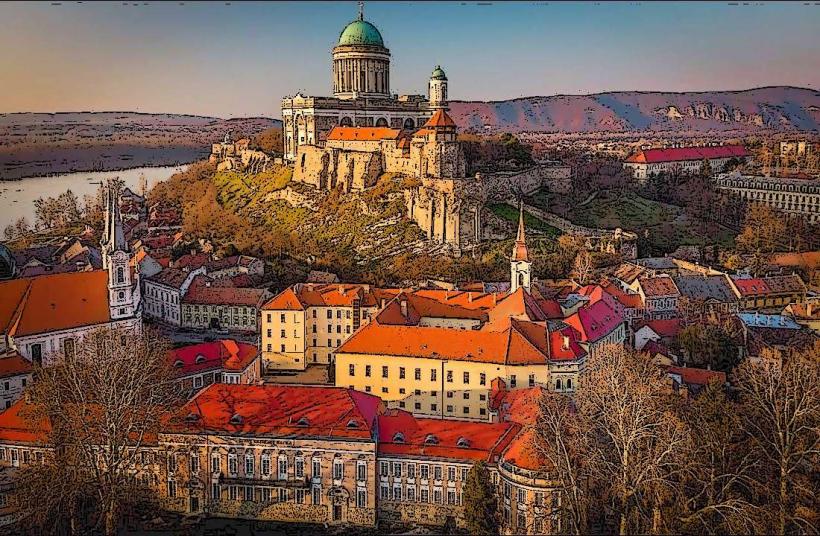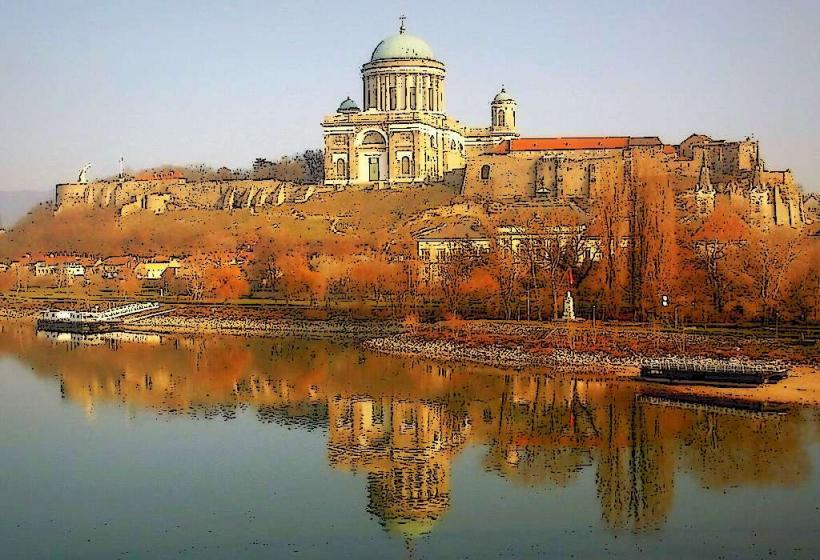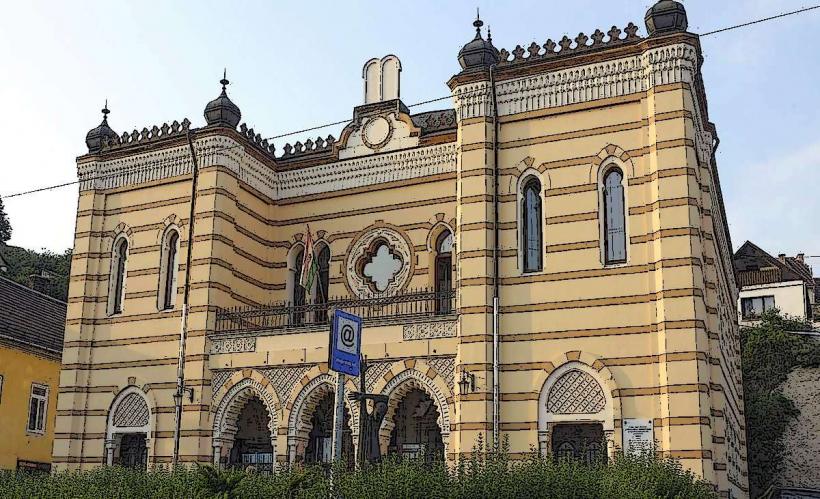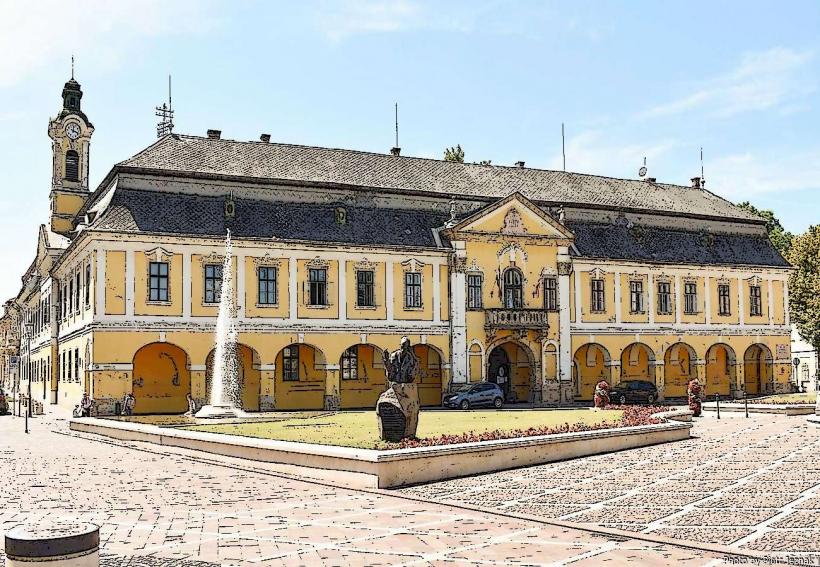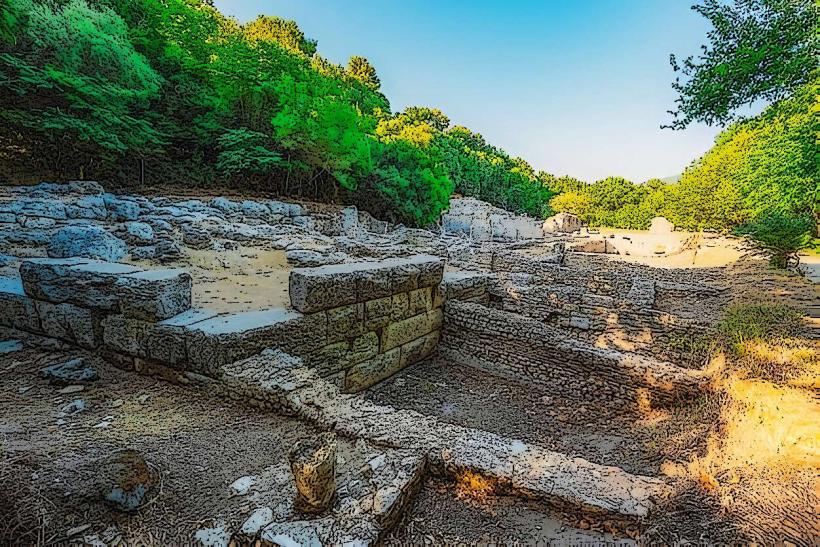Information
Landmark: Christian MuseumCity: Esztergom
Country: Hungary
Continent: Europe
The Christian Museum (Keresztény Múzeum) in Esztergom, Hungary, is one of the most important museums in the country, housing an extensive collection of religious art and artifacts that span the history of Christianity in Hungary and beyond. It is located near the Esztergom Basilica, a city long recognized as the religious heart of Hungary, making it a key cultural and historical destination for visitors interested in the country's Christian heritage.
History of the Christian Museum
Foundation and Origins:
- The Christian Museum was founded in 1802 by József Hild, a Hungarian architect and scholar, to house a collection of religious art and historical Christian artifacts. The museum was initially created as part of the Archbishopric of Esztergom, reflecting the city's central role in Hungary’s Catholic history.
- The collection began with a private donation from the Archbishop of Esztergom, and over time, it grew to include religious objects from various parts of Hungary and beyond, many from church collections and monasteries across the country.
Role in Preserving Religious Art:
- The museum has played a crucial role in preserving religious artworks and liturgical objects that might have otherwise been lost to time, particularly after the dissolution of monasteries and the impact of war on Hungary’s cultural heritage.
- The museum’s collection includes pieces from a variety of historical periods, from the Early Christian to the Baroque era, and it provides a fascinating overview of the artistic evolution of Christian iconography in Hungary.
Collection Highlights
The Christian Museum in Esztergom is renowned for its extensive and diverse collection, which spans several centuries and artistic styles, primarily focused on Hungarian and Central European Christian art.
Early Christian and Medieval Art:
- The museum holds a significant collection of Early Christian relics such as Roman sarcophagi, stone reliefs, and frescoes. These artifacts date back to the early stages of Christianity in Hungary and offer insight into the development of religious life in the region during the Roman Empire.
- The medieval collection is particularly notable, with Gothic altarpieces, wooden sculptures, and manuscripts that reflect the religious fervor and artistic traditions of the time.
Renaissance and Baroque Art:
- The museum is home to an impressive range of Renaissance and Baroque art, including works by famous Hungarian and Italian artists. It features religious paintings, sculptures, and furniture from the 16th to the 18th centuries, a period during which religious art reached new heights in Hungary.
- Altarpieces, oil paintings, and statues of saints are some of the most treasured items in the museum’s collection. Many of these pieces were created for churches and monasteries in Hungary and feature biblical scenes, saints, and Christian symbols.
Liturgical Objects:
- The museum also showcases a variety of liturgical items, such as chalices, candelabras, altar cloths, and vestments, many of which have been used in the Esztergom Basilica and other churches in Hungary. These objects provide insight into the rituals and ceremonies of the Catholic Church.
- Special attention is given to church silver and gold, including relics and liturgical vessels, which are intricately designed and often decorated with precious stones.
Sculpture and Religious Icons:
- The museum has a notable collection of religious sculptures made from wood, stone, and bronze. These include images of Christ, Mary, and various saints from different periods.
- The painted wooden statues of saints, commonly used in churches and chapels throughout Hungary, are particularly well-represented. The museum also has a fine collection of icon paintings, typical of the Byzantine and Eastern Christian traditions.
Hungarian Religious Art:
- A large part of the museum's collection focuses on the development of Hungarian religious art over the centuries. This includes works by famous Hungarian artists, such as Miklós Barabás and László Paál, who contributed to the Baroque and Romantic movements in Hungary.
- The museum also has a collection of Hungarian manuscripts and incunabula (early printed books), including religious texts and liturgical works that reflect the intellectual and spiritual climate of the time.
Architectural Features of the Museum
The museum itself is housed in a historic building located near the Esztergom Basilica, which adds to the overall spiritual atmosphere of the site. The building combines elements of Baroque and Neoclassical architecture, in line with the historical significance of the museum's collection. The exhibition rooms are spacious and designed to showcase the art in the best possible light, with each room focusing on a specific period or theme of Christian art.
Interior Layout:
- The museum’s rooms are divided according to the different historical periods of religious art, with collections organized by centuries and styles. Some of the key exhibits are housed in dedicated rooms, while others are displayed in a chronological order to highlight the evolution of Christian art and culture.
- The museum has also incorporated modern techniques for displaying art, with interactive displays and multimedia presentations that help visitors understand the history behind the artworks and objects on display.
Museum Gardens:
- The museum is set in a beautiful garden area, where visitors can enjoy a peaceful atmosphere and view the Esztergom Basilica in the distance. The garden also contains statues and sculptures related to Christian themes, providing a spiritual setting for reflection.
Visitor Experience
Educational and Guided Tours:
- The museum offers guided tours in multiple languages, including Hungarian and English, which provide a deeper understanding of the art, history, and significance of the collection. These tours cover the history of Christianity in Hungary and its reflection in the museum’s exhibits.
- The museum is also involved in educational activities, including workshops and special programs for students and scholars interested in religious and art history.
Cultural Events:
- Throughout the year, the museum hosts various cultural events, such as lectures, temporary exhibitions, and special presentations that showcase specific aspects of Christian history or religious art.
- The museum’s location in Esztergom, one of Hungary’s most important religious centers, makes it an ideal venue for spiritual gatherings and artistic performances.
Conclusion
The Christian Museum in Esztergom offers a fascinating and rich exploration of the history of Christian art and the religious heritage of Hungary. With its diverse collection of liturgical artifacts, paintings, sculptures, and historic manuscripts, it provides an invaluable insight into the artistic and spiritual traditions of the country. Visitors will find not only masterpieces of religious art but also an important cultural landmark that reflects the deep connection between Hungary’s Christian past and its modern identity. Whether you are an art lover, a history enthusiast, or simply curious about Hungary’s religious traditions, the Christian Museum in Esztergom is an essential destination.

